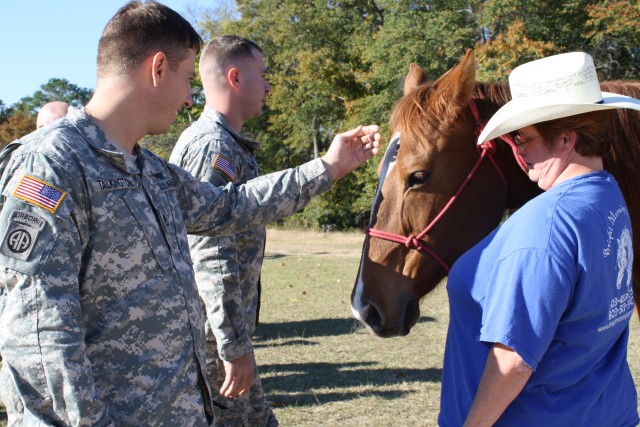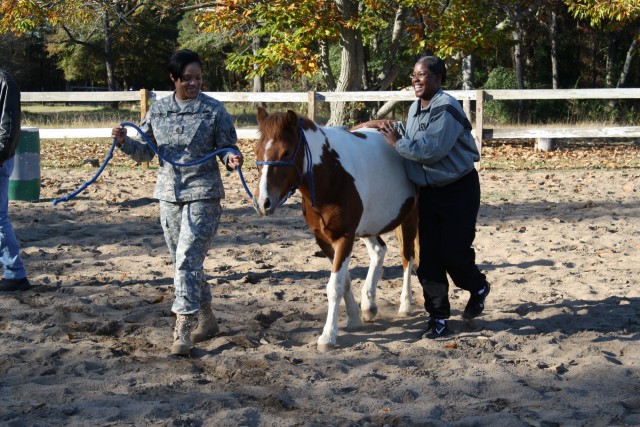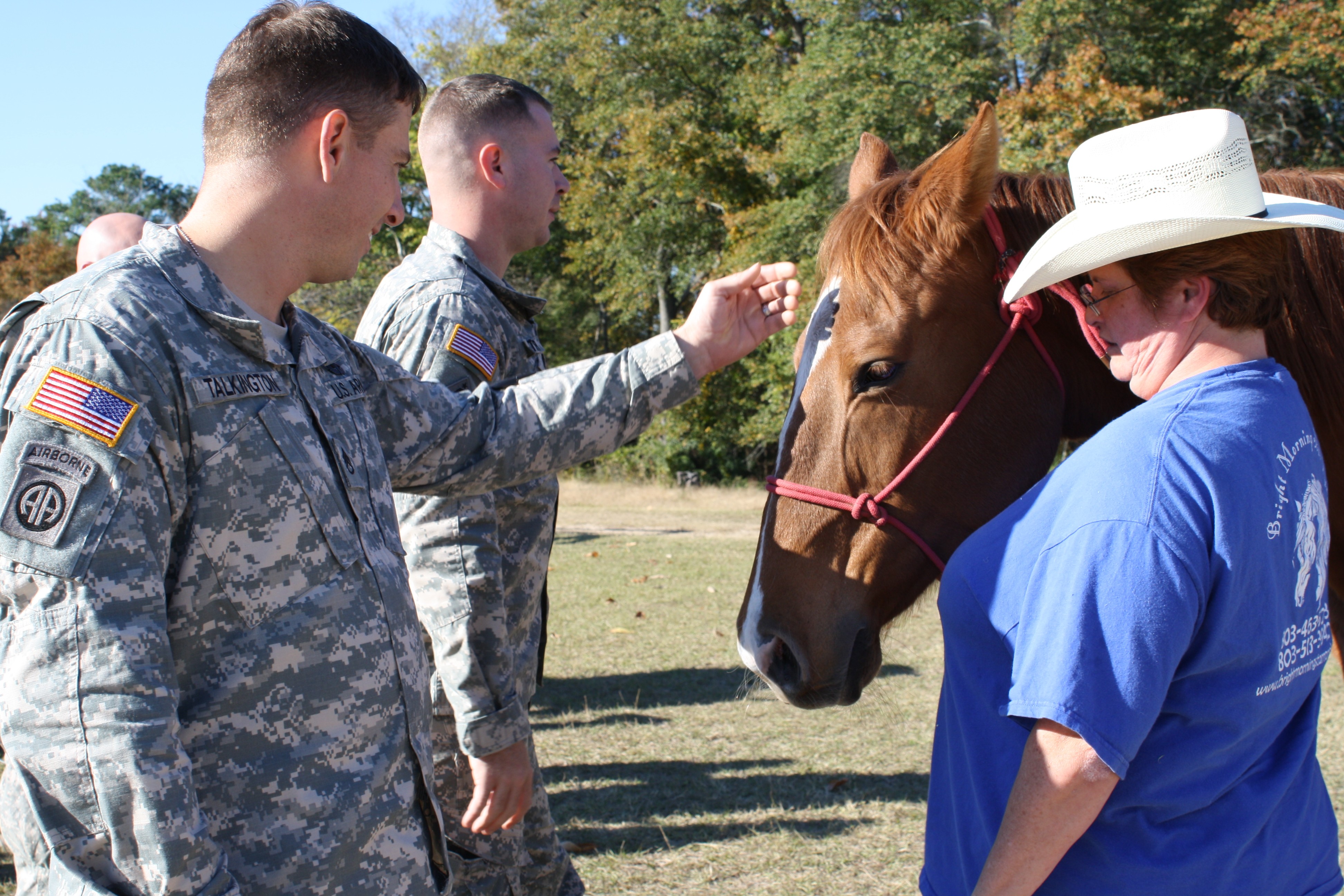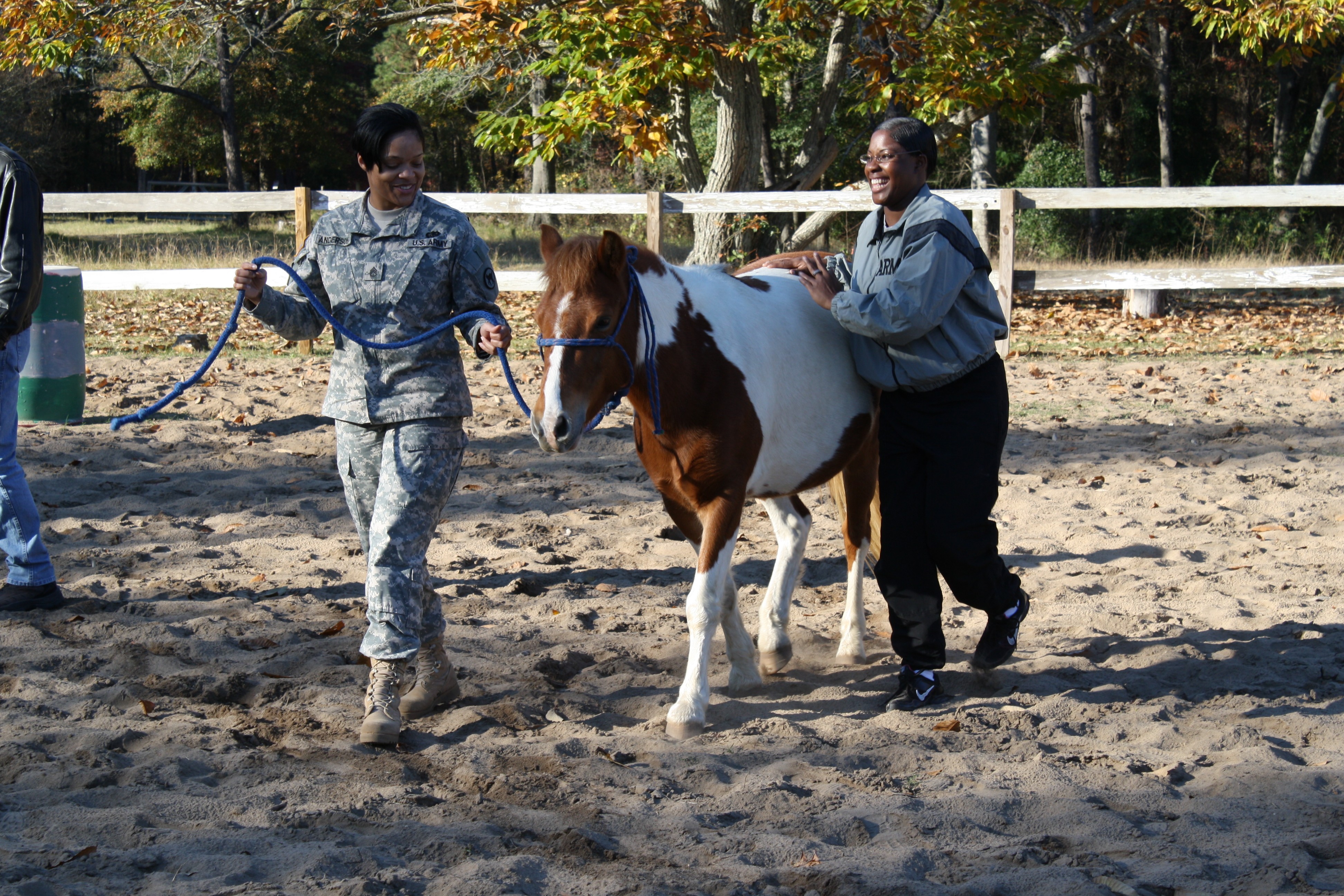FORT JACKSON, S.C. -- For decades, horses have charged into battle carrying cavalrymen, pulling artillerymen's caissons and serving as vehicles for mounted military police. Today, horses are helping wounded warriors by guiding them along the road to resiliency.
Through Heroes & Horses, an equine-assisted psychotherapy program, Soldiers with Fort Jackson's Warrior Transition Unit (WTU) are capitalizing on the keen senses of horses to help them better understand themselves and to heal.
"The horses give us feedback about how the clients are interacting with them; maybe different emotions they may be feeling, how their problem-solving skills are going, (and) different coping skills they have," said Stephanie Bowman, Equine Assisted Growth and Learning Association-certified mental health specialist and founder of Turning Point Growth & Learning Center, which facilitates the program at Bright Morning Star Ranch in Blythewood.
"And what we do is process that with the clients to look at their experience and what the horses may have been able to tell them about themselves."
A group of WTU Soldiers recently visited the ranch to experience Equine Assisted Growth and Learning, an experiential form of learning that helps participants increase self-awareness by interacting with horses and overcoming challenges. The Soldiers helped horses navigate obstacles, and like mirrors, the horses reflected the behaviors and emotions of the Soldiers around them through body language, such as flicking their ears or pushing and kicking, sometimes simply walking away.
"Horses as prey animals pick up on the emotional states and even underlying beliefs that people have," Bowman said. "So the body language of the horses, where they position their head, their body relative to the people, their ears, and what they're looking at, basically gives feedback on what they are picking up on from the people."
Staff Sgt. Antonio Barkley, WTU Soldier, said he was skeptical, but found it to be true that the horses do mimic human behaviors.
"In the last exercise I was a part of, we were tasked to put together some obstacles (and) I was a little concerned that the horse would step on or jump over the first obstacle," Barkley said. "But the Soldier who was in front, he actually walked over the obstacle first and the horse followed right behind. And as he was leading the horse through the obstacle, the horse mirrored every one of his steps."
Barkley said he also witnessed how a horse's behavior can be reflective of human emotions.
"The nervousness that you exhibit when you step to the horse or how you behave around the horse can reflect in how they respond to you," Barkley said.
Bowman said the horses' mirroring effect can offer insight into Soldiers' emotions by helping them become aware of patterns that could be getting in the way of finding effective solutions to problems.
"We often make obstacles much larger in our minds than they really are," Bowman said. "A lot of times (the participants) will find that (working through them) is much easier than they thought it would be."
The program's activities, which do not involve riding, were designed to serve as metaphors for issues the Soldiers are working on in their professional and personal lives. They provided opportunities for Soldiers to imagine the possibility of a smooth transition, whether from combat to garrison, military to civilian life, or just moving beyond the WTU to serving in the regular Army again, Bowman said.
The activities also encouraged goal setting, she said. The Soldiers participated in a group activity in which they collectively decided on a goal to complete a "successful transition." They assisted each other and their horses as they worked through obstacles to meet that goal.
In addition to seeing how the horses reacted to the Soldiers, Bowman observed the Soldiers to see if they were aware of how the horses reacted to them.
For instance, during one obstacle, a curious horse moseyed toward a few of the Soldiers to observe what they were doing.
"It was like someone, a spouse or a child, who wants to know what and how you're doing, someone who has a desire to understand what you're going through," Bowman said.
Staff Sgt. Retha Anderson, a WTU Soldier, said she noticed the human-like behavior, especially when the horses followed some of the Soldiers around the arena.
"It was like a family member who would normally not want you to leave them alone, maybe like a child or a (sibling) that likes to trail you a lot," Anderson said.
Bowman said she hoped the horses' behavior made Soldiers think about how other people in their lives are affected by how they interact with them and how those people get their own needs met.
But more importantly, she said she hoped the Soldiers were able to recognize their emotions and to learn how to deal with them in different ways. She said she plans to continue offering programs like Heroes & Horses to service members in the future.
"We look forward to continuing to be a resource for these brave men and women who have sacrificed much for our safety and freedom."
For more information about the Heroes & Horses program, visit www.TurningPointGLC.com.
Related Links:
STAND-TO!: Warrior Transition Command
Turning Point Growth and Learning Center




Social Sharing